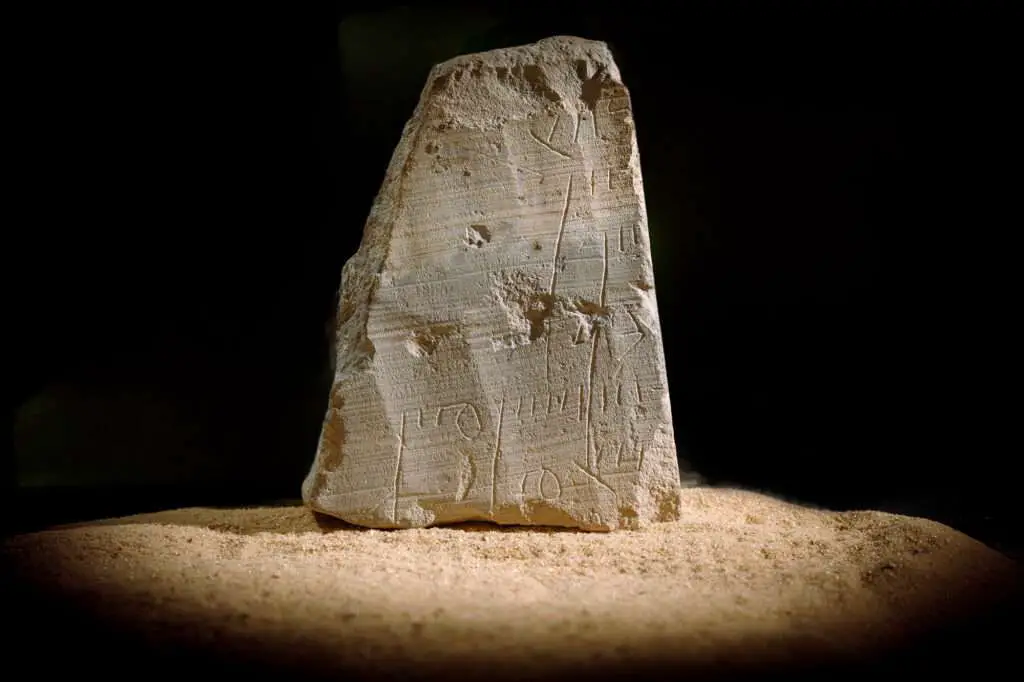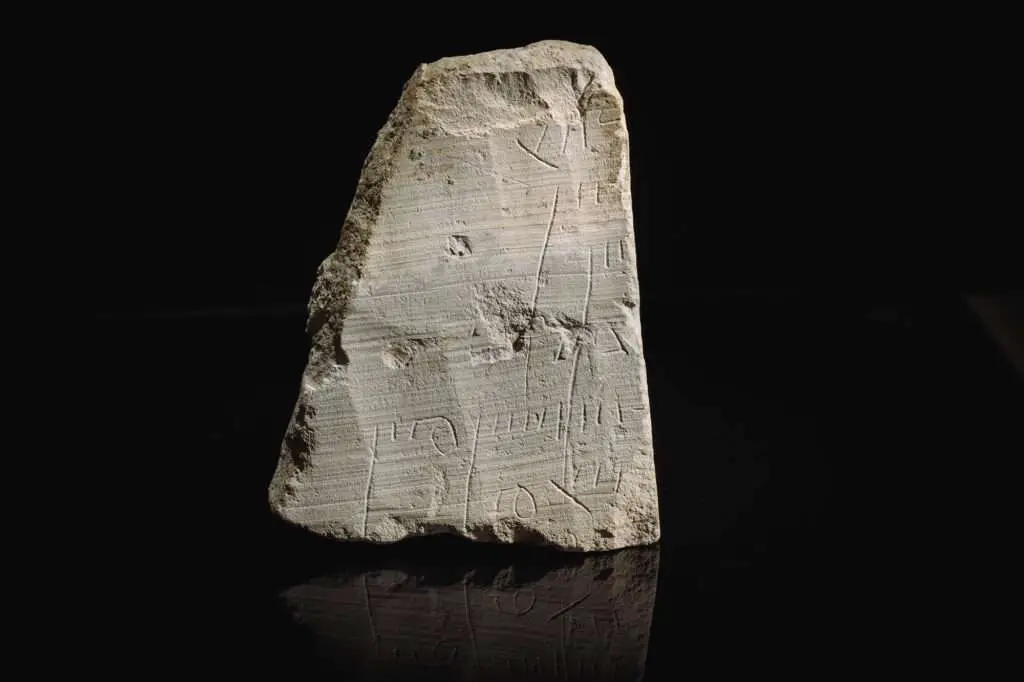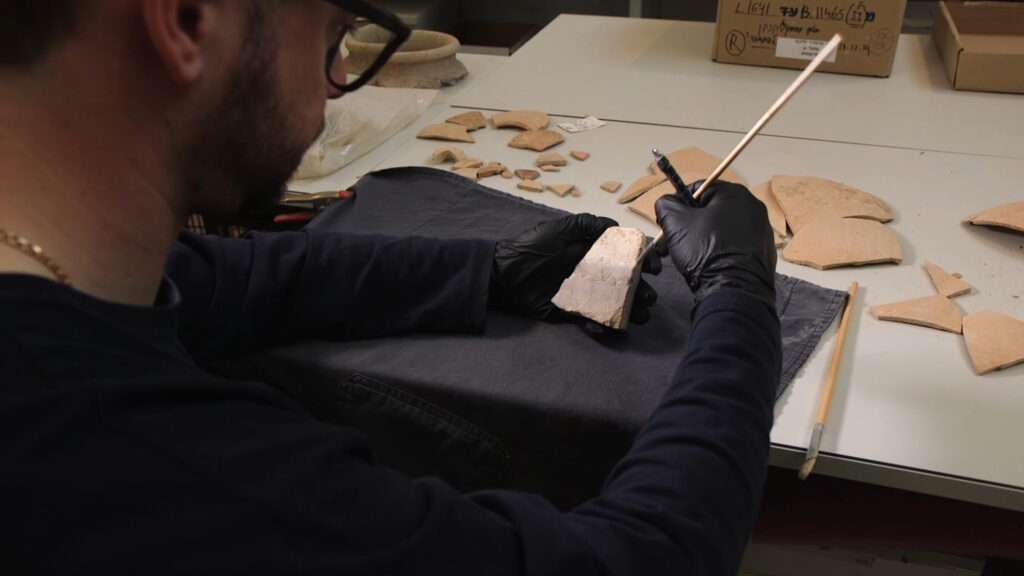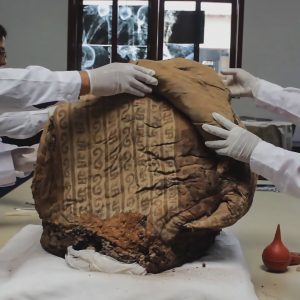Archaeologists have discovered a stone receipt engraved with names and numbers dating back 2,000 years in what was a bustling market area of Jerusalem.
The stone tablet bears the name ‘Shimon’, which the Israel Antiquities Authority (IAA) said was a popular name in the period, followed by the Hebrew letter mem, which means ‘money’, as well as symbols representing numbers.
They said that they believe the stone, which can be seen in the footage being restored by an expert, was most likely a receipt issued in exchange for payment.
Newsflash obtained a statement from the IAA saying that the “financial record from 2,000 years ago was uncovered on the Pilgrimage Road in the City of David–Jerusalem’s main thoroughfare during the Second Temple period.”
The experts added that the stone tablet was “probably a receipt or a payment instruction recorded by a person engaged in commercial activity”.
The statement said: “The seven partially preserved lines of the inscription include fragmentary Hebrew names with letters and numbers written beside them. For example, one line includes the end of the name ‘Shimon’ followed by the Hebrew letter mem, and in the other lines are symbols representing numbers.
“Some of the numbers are preceded by their economic value, marked with the Hebrew letter mem, an abbreviation of ma’ot (Hebrew for ‘money’), or with the letter resh, an abbreviation of reva’im (Hebrew for ‘quarters’).”

The experts said that it is not the first time that inscriptions like this dating back to the early Roman period have been found in the area, but it is the first inscription “to be revealed to date within the boundaries of the city of Jerusalem at that time.”
According to the researchers, the writing was carved onto a chalkstone slab with a sharp tool.
The statement also said: “Apparently, the stone slab was originally used as an ossuary (burial chest), commonly used in Jerusalem and Judea during the Early Roman period (37 BCE to 70 CE).
“Ossuaries are generally found in graves outside the city, but their presence has also been documented inside the city, perhaps as a commodity sold in a local artisan’s workshop or store.
“The intriguing find was discovered in the lower city square, located along the Pilgrimage Road. This Road, extending some 600 metres, connected the city gate and the area of the Siloam Pool in the south of the City of David to the gates of the Temple Mount and the Second Temple, and essentially served as the main thoroughfare of Jerusalem at the time.
“This unique discovery joins similar findings uncovered in the area, attesting to the commercial nature of the area.”
The experts said that the stone tablet was “retrieved from a tunnel of a previous excavation at the site, dug at the end of the 19th century by British archaeologists, Bliss and Dickie, who excavated tunnels and pits along the Stepped Street.”

The researchers said that “the everyday life of the inhabitants of Jerusalem who resided here 2,000 years ago is expressed in this simple object.”
The research, conducted by Nahshon Szanton, an IAA Excavation Director, and an epigraphist, Professor Esther Eshel of Bar Ilan University, has been published in the academic journal Atiqot.
Szanton and Eshel said: “The combination of the architectural and tangible space of the huge paved stones of the square that were preserved at the site, and the discovery of small finds in this area, such as the measuring table and the new inscription, allow us to reconstruct parts of the incredibly unique archaeological puzzle in one of the vibrant centres that existed in ancient Jerusalem.
“Each piece of information, and certainly an ancient inscription, adds a new and fascinating dimension to the history of the city”.
The Israeli Minister of Heritage, Rabbi Amichai Eliyahu, said: “The remarkable discovery on the Pilgrimage Road in Jerusalem uncovers another aspect of Jewish life in the city from 2,000 years ago.
“The unique excavations of the Israel Antiquities Authority in the area position the City of David as a pivotal centre in the Jewish people’s global historical narrative.
“The Ministry of Heritage will continue to work to strengthen and promote national heritage in all areas.”

And Eli Escusido, Director of the IAA, said that “the Pilgrimage Road, which is continually being uncovered in the City of David National Park in Jerusalem, is a flagship project of the Israel Antiquities Authority.
“It is not a coincidence that the many discoveries which are being revealed in the excavation shed light on the centrality of this road even during the Second Temple period.
“With every discovery, our understanding of the area deepens, revealing this street’s pivotal role in the daily lives of Jerusalem’s inhabitants 2,000 years ago”.



